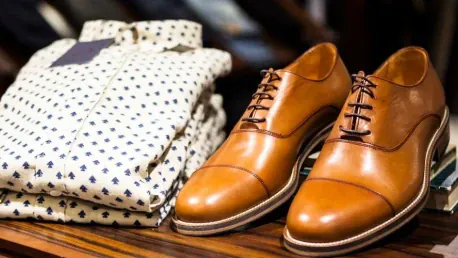In recent years, the luxury e-commerce sector has been experiencing challenging times. Major players such as Matchesfashion, Farfetch, Net-A-Porter, and MyTheresa, once leading the digital transformation in high-end fashion retail, are now facing numerous obstacles. This article delves into the various factors contributing to their decline, providing insights into the evolving dynamics of the luxury retail industry.
Financial Instability and Debt
Case Study: Matchesfashion’s Downfall
Matchesfashion’s collapse in March 2024 serves as a striking example of the financial instability plaguing the sector. Despite its longstanding presence since 1987, the platform accumulated substantial debts amounting to approximately USD 263 million. This financial burden included amounts owed to designer brands and customers, with little hope for significant recovery. The widespread discounting and softened demand in luxury fashion further exacerbated their financial troubles, leading to a critical analysis of the vulnerabilities within luxury e-commerce platforms.
The extravagant discounts that were once considered a competitive advantage have now become a double-edged sword. Matchesfashion’s struggle underscores the broader issue where offering significant discounts, while temporarily boosting sales, erodes long-term profitability. Moreover, as consumer demand waned, liquidity pressures mounted, making it difficult for Matchesfashion to meet its financial obligations. These conditions fostered a precarious situation, forcing the platform to confront its operational inefficiencies head-on. Therefore, the financial instability seen in Matchesfashion reveals key structural weaknesses that other luxury e-retailers must heed.
Widespread Financial Strain
Other luxury e-commerce platforms like Farfetch are also struggling under the weight of financial pressures. The competitive market has led platforms to engage in aggressive discounting, which, while attractive to customers, has significantly eroded profit margins. Combined with operational costs and the need for continuous technological advancements, these platforms are finding it increasingly difficult to maintain financial health.
Operational expenses in the luxury e-commerce sector are no trifling matter. From the costs associated with maintaining cutting-edge technology to meeting the logistical demands of high-end product delivery, the financial strain is palpable. Farfetch’s foray into various market-expanding initiatives further highlights the financial balancing act required to stay ahead. Investments in marketing, partnerships, and new technology often create short-term cash flow challenges, exacerbating already thin profit margins. These measures, while necessary for gaining a competitive edge, place an unsustainable burden on platforms already grappling with financial instability.
The Shift from Online to Experiential Shopping
The Re-Emergence of Brick-and-Mortar Stores
Luxury brands are returning to traditional retail by investing heavily in brick-and-mortar stores. They are focusing on creating immersive, personalized shopping experiences that highlight the exclusivity and craftsmanship of their products—attributes hard to replicate online. This shift represents a broader change in consumer behavior, with many preferring the tangible and emotional engagement of in-store shopping.
The resurgence of physical stores also underscores a deeper consumer longing for the experiences that define luxury shopping. Personalized services, bespoke fittings, and the tactile joy of engaging with high-quality materials are elements that e-commerce platforms struggle to emulate. This dynamic is pushing luxury brands to innovate in their retail environments, from exclusive events to in-store technologies designed to elevate the shopping experience. As such, brick-and-mortar stores do not simply serve as points of purchase but as venues for brand stories to be told and lived, enriching consumer loyalty and satisfaction.
Consumer Preferences and Shopping Experiences
Consumers’ renewed passion for in-store experiences indicates a significant evolution in shopping behavior. The pandemic-driven surge in online shopping has given way to a deeper appreciation for the tactile and sensory aspects of luxury shopping. As these preferences evolve, luxury e-commerce platforms must adapt to stay relevant in this changing market landscape.
This shift is also fueled by a growing consumer desire for social and emotional experiences that lie beyond mere product acquisition. The appeal of immediate gratification offered by physical stores, coupled with the authentic brand interactions facilitated through human touchpoints, is reshaping consumer priorities. Moreover, brands are leveraging this trend by curating unique in-store experiences, thus compelling e-commerce platforms to rethink their value propositions. The evolution in consumer preferences signals a critical juncture for the luxury e-commerce sector, where adapting to these comprehensive experiential demands could determine their future trajectory.
The Pandemic’s Dual Impact
Surge and Self-Sufficiency During Pandemic
The COVID-19 pandemic initially drove the success of e-commerce platforms as physical stores closed and consumers turned to online shopping out of necessity. However, this period also encouraged luxury brands to develop their own e-commerce capabilities. Post-pandemic, many of these brands now prefer to sell directly to consumers, bypassing third-party platforms and weakening the latter’s market position.
The pandemic, while catalyzing a boom in online sales, also acted as a crucible for brands to refine their digital strategies. Luxury brands invested heavily in building robust direct-to-consumer e-commerce infrastructures, thereby reducing their reliance on third-party platforms. This strategic pivot enabled luxury brands like Gucci, Louis Vuitton, and Chanel to retain greater control over their brand narratives and customer experiences. Consequently, third-party platforms like Farfetch and Net-A-Porter are grappling with the resultant shrinkage in market share and consumer traffic, necessitating a reevaluation of their business models to stay competitive.
Long-Term Effects of Brand Independence
As luxury brands strengthen their direct-to-consumer models, e-commerce platforms are left to contend with diminished roles. Brands’ self-sufficiency in online retail has reduced their dependency on third-party platforms, leading to significant shifts in the industry’s dynamics. E-retailers must now find new ways to add value and retain their market presence.
The empowerment of luxury brands’ internal e-commerce capabilities heralds a significant recalibration in retail hierarchies. By selling directly, brands benefit from higher profit margins and detailed consumer data, enabling personalized marketing efforts. This shift forces e-commerce platforms to innovate by offering unique selling points, such as exclusive collections, superior customer service, or enhanced digital experiences. Moreover, partnering with niche designers or pioneering sustainability initiatives may be viable avenues for e-retailers to distinguish themselves. The persistence of these trends indicates a continued evolution in how luxury products are bought and sold, with direct-to-consumer models steadily gaining prominence.
Rising Competition
Internal Market Saturation
The luxury e-commerce market is saturated with numerous platforms, each striving to differentiate itself. Platforms like MrPorter and Farfetch attempt to stand out by offering additional experiences such as styling guides and editorial content. However, the lack of a distinct unique selling point (USP) among many platforms has intensified internal competition, making it harder for them to maintain a competitive edge.
The internal market saturation is intensely challenging as platforms vie for a finite luxury consumer base. The redundancy of product offerings and overlapping brand partnerships exacerbate the struggle for differentiation. MrPorter and Farfetch’s efforts to incorporate editorial content and fashion consultations highlight the need for multi-faceted engagement strategies. However, these efforts sometimes fail to create a deeply resonant USP, thus diluting brand identity. E-retailers must therefore invest in innovative strategies such as customization options and exclusive brand collaborations to develop strong USPs that attract and retain high-value consumers.
The Threat of Reseller Platforms
Externally, reseller platforms such as Vestiaire Collective pose a considerable threat by offering rare or limited-edition items at competitive prices. This competition from resellers further pressures e-retailers’ profit margins, forcing them to rethink their strategies and enhance their value propositions to attract and retain customers.
The rise of reseller platforms capitalizes on the growing consumer appetite for unique, vintage, and pre-owned luxury items. Platforms like Vestiaire Collective leverage this trend by curating rare collections that e-retailers cannot easily source. This growing faction of thrifty luxury shoppers places immense pressure on traditional e-retailers to broaden their product portfolios and innovate pricing strategies. Additionally, reseller platforms’ focus on sustainability through the circular economy further endears them to environmentally conscious consumers. In this challenging landscape, e-retailers must deploy sophisticated inventory management systems and enhance customer engagement to sustain their market relevance.
Brand Loyalty and Inventory Management
Strong Consumer Brand Loyalty
Luxury consumers often exhibit strong brand loyalty, favoring direct purchases from brands over third-party platforms. This consumer behavior challenges e-retailers in securing a loyal customer base, as customers are more inclined to engage directly with their preferred brands.
The ethos of exclusivity embedded in luxury brands fosters deep-seated loyalty among affluent consumers. These loyalists are often motivated by an intrinsic desire for direct brand relationships and the perceived authenticity that accompanies direct purchases. This trend presents a formidable barrier for e-retailers struggling to cultivate brand loyalty and reduce customer churn. Furthermore, the move towards direct-to-consumer sales by major luxury brands exacerbates the difficulty for third-party platforms. E-retailers must proactively address this dynamic by offering unparalleled customer service, unique perks, and loyalty programs to entice and retain discerning luxury buyers.
Complex Distribution Agreements
Luxury brands maintain stringent distribution agreements and limited stock availability, making it difficult for e-retailers to manage inventory efficiently. Navigating these complex distribution channels requires substantial effort and resources, further compounding the challenges faced by e-retailers in maintaining healthy operations.
Securing adequate inventory that aligns with luxury consumers’ expectations is an intricate endeavor. Distribution agreements often restrict e-retailers by enforcing stringent supply constraints and exclusive contracts. This complexity is compounded by the market’s demand for perfect synchronization between online product availability and in-store exclusivity. Achieving such equilibrium necessitates sophisticated inventory management systems integrated with predictive analytics for demand forecasting. Furthermore, forming strategic alliances with luxury brands for exclusive product launches or limited-time collections can mitigate inventory shortages. Efficiently navigating these challenges can empower e-retailers to deliver, maintain operational fluidity, and enhance consumer satisfaction.
Trust and Authentication Concerns
Ensuring Authenticity
One of the primary concerns for luxury consumers is the authenticity of the products they purchase. Despite rigorous authentication processes employed by platforms like Matchesfashion, the inherent uncertainty of buying luxury items online persists. This concern is particularly pronounced for high-value items such as watches and jewelry.
In the realm of high-end fashion, the authenticity of luxury items remains sacrosanct. Platforms like Matchesfashion invest heavily in comprehensive authentication procedures to uphold consumer trust, yet skepticism remains. The risk of counterfeit goods is a significant deterrent, particularly for extravagant purchases like fine jewelry and luxury watches where authenticity is paramount. To counter this, e-retailers are adopting advanced verification technologies, including blockchain and AI-driven image recognition, to assure customers of product legitimacy. These measures, while improving trust, require consistent refinement and communication to effectively quell consumer apprehensions about authenticity in luxury e-commerce.
Consumer Trust Issues
Building and maintaining consumer trust is an ongoing challenge for luxury e-commerce platforms. The risk of counterfeit products and the inability to verify quality firsthand drives many consumers to prefer in-person purchases, complicating the efforts of e-retailers to establish credibility and trustworthiness.
The endeavor to build trust is compounded by the intangible nature of online shopping. Consumers, deprived of the physical touchpoint, rely heavily on the credibility and transparency of the platform. E-retailers must deliver impeccable user experiences, accurate product descriptions, and responsive customer service to bridge this trust gap. Additionally, the introduction of virtual assistants for personalized shopping experiences can enhance customer confidence. Nevertheless, the visceral satisfaction derived from examining a product personally remains challenging to replicate online. E-retailers must therefore innovate continuously to reinforce their credibility and offer reassurance that rivals the certitude of in-store purchases.
Technological Innovations and Their Limitations
Embracing Digital Innovations
To compete with the personalized, immersive experiences offered by physical stores, e-retailers have explored technologies like augmented reality (AR) and virtual changing rooms. MyTheresa, for example, has embraced digital innovations like virtual styling consultations and exclusive online events. However, until these technologies are refined, they can lead to high return rates, further impacting profits.
The integration of AR and virtual changing rooms attempts to approximate the tactile engagement of in-store shopping by allowing consumers to visualize products in a real-world context. MyTheresa’s ventures into virtual styling and exclusive digital events showcase the potential of these technologies to create immersive online experiences. However, the infancy of these technological innovations poses limitations, such as technical glitches and inconsistent user experiences, which contribute to elevated return rates. Therefore, while AR and VR offer promising avenues for enhancing online luxury shopping, their current imperfections necessitate continual advancements to refine these solutions and maximize their effectiveness.
The Challenges of Adoption
In recent years, the luxury e-commerce sector has been experiencing significant challenges. Major players such as Matchesfashion, Farfetch, Net-A-Porter, and MyTheresa, who were once at the forefront of the digital transformation in high-end fashion retail, are now facing a slew of obstacles. These industry giants are grappling with factors that are leading to their decline, providing a fascinating insight into the evolving dynamics of the luxury retail market.
One major issue is the intense competition not just among themselves, but also from traditional brick-and-mortar luxury retailers who have stepped up their digital presence. Additionally, there are rising operational costs, particularly with logistics, that affect profitability. The high costs associated with online advertising and customer acquisition in the digital space are also putting a strain on these businesses.
Moreover, consumer behavior has shifted, with an increasing demand for sustainability and ethical practices. This shift is pushing luxury e-tailers to re-evaluate their strategies to align with new consumer values. There’s also a growing preference for exclusive, personalized shopping experiences that are hard to replicate online.
Lastly, global economic uncertainties and fluctuating currencies add another layer of complexity, making it difficult for these platforms to maintain steady growth. This article delves deeper into these challenges, offering a deeper understanding of what’s reshaping the luxury e-commerce landscape.









